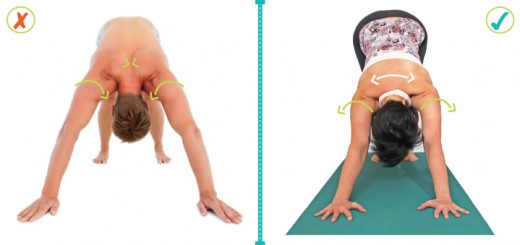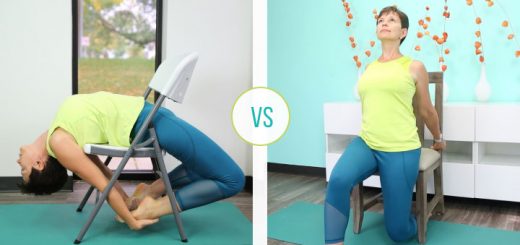How do we know which parts of us need to be taken care of? Understanding psychological reasons for the physical symptoms
6Every student who comes in seeking yoga therapy is a complex blend of structural and physiological peculiarities, genetics, past experiences, perceptions, ideas, habitual patterns of movement and behavior, and so on. As yoga therapists, we have a general understanding of what kind of practices and techniques would be useful for a person in a similar situation or with a similar condition. However, how an individual responds to them is an educated guess. The only person who can truly sense what is happening inside and what they need is the student themselves.
As yoga teachers and yoga therapists, we believe in the inherent wisdom of the body (including the mind) and its ability to heal itself. Sometimes things get in the way of that healing, and it is our job to help our students discover what those things are and to overcome them. That is why one of the most important things we try to teach our students is body awareness. Again and again, we encourage our students to turn their attention inward, tune in to their breath and listen to what the body has to say. However, the messages that the body sends can be muffled or ambiguous. Or the access to the inner chambers can be blocked altogether if the student is afraid of what might be lurking inside. That is why it is so useful to guide our students in their exploration of the inner resistance they encounter. The physical or physiological discomfort that the student is experiencing can be used as an important jump-off point, or a trailhead, to gradually lead us toward the reason for the discomfort.
While Internal Family Systems (IFS) Therapy works on reaching and unburdening vulnerable parts of ourselves, yoga therapists can use IFS techniques to help their students release physical tension and relieve physiological symptoms. Here is an example of what this might look like.
At the beginning of this year, I began to feel exhausted. It wasn’t the usual tired and recharge sort of tiredness, but something deeper and more persistent. There were no obvious health issues to point to, and I was beginning to feel frustrated because my usual yogic pick-me-up techniques were not working. After several weeks of dealing with it, I decided to go back to the source. Lying on my back, I first had to negotiate with my frustrated and impatient inner voices that refused to let me in. I thanked them for their concern and brought my attention to the persistent achiness and tiredness in my upper and middle back. I kept my attention there for a while listening and asking in my mind: What is going on? How can I help? I tried to sense what my body was trying to manage and offer my assistance. After some time of sensing the back of my body, my attention was pulled to my kidneys. It rested there for a bit; I waited. Then I felt two distinctive lines being drawn along the back of my body from my kidneys to my teeth. What?! I mentally followed that path. It stayed lit, and the words adrenal fatigue came out of nowhere. Curious, I read up on it afterward and discovered that adrenal fatigue could arise because of prolonged stress, infection, trauma, or surgical procedures. Since my body pointed me toward my teeth, I went to see my dentist, and they found a barely visible long-term infection under one of my teeth. As soon as I took care of that infection, my fatigue was gone.

When I use this technique with my students, we often get some very unexpected images, insights, and results. One of my students connected her recurring shoulder pain with her dad constantly telling her to “put your shoulder to the wheel” as a way to stay productive. Whenever she did anything important, her body felt the need to tense that shoulder. Another student had discovered that the right side of her body consistently overpowered her left side and connected it to her masculine tendencies suppressing her feminine ones. Her left side ached, and felt burdened. She went on a journey of beautiful, unexpected imagery to get there. Another student had a visceral experience of hurt and violation that her body had gone through with recent cancer surgery, even as the owner preferred to appear upbeat and in charge. Bodies can tell so many stories if we listen attentively.
It is helpful to try to figure out which part(s) of us are trying to get our attention through the physical discomfort and physiological symptoms. Our inner managers usually tighten our muscles and fascia and restrict movement; our internal firefighters create agitation, inflammation, stress, and distraction in the system; our exiled parts show up as a deep ache or sense of tightness in the chest, back, or abdomen.
Understanding the underlying psychological reasons for the physical symptoms is essential because if those reasons are left unaddressed, any type of yogic or other intervention will be much slower and less effective. As in my own example above, it didn’t matter how often I did Krama Inhale technique to build my energy; as long as the infection was there, my body would have struggled.
Next time we will discuss the six steps that the IFC Therapy suggests for working with protective parts to overcome their resistance and be able to see what’s causing our physical and physiological issues – tune in!
[jetpack_subscription_form]




















Olga,
I really loved your patience, slowing down, and asking for inner guidance to get to the root cause of your fatigue. This inner dialogue taps right into intuition and is sorely needed by all of us.Thanks so much for sharing!
xo
Cynthia
Thank you, Cynthia! I am always amazed at how much we can uncover as we slowly make our way in, especially when we make it past our assumptions and superficial explanations 🙂
Body of Love! Thank you so much for your incredible work in the YOGA of our bodies and our spirit. Whether on the mat or a lesson shared you open us to the wholeness that is there within us!
We are healthy, we are love!
Thank you, Lora!
Great article ! Glad you are feeling better ??
Thank you, Terri! Much better 🙂